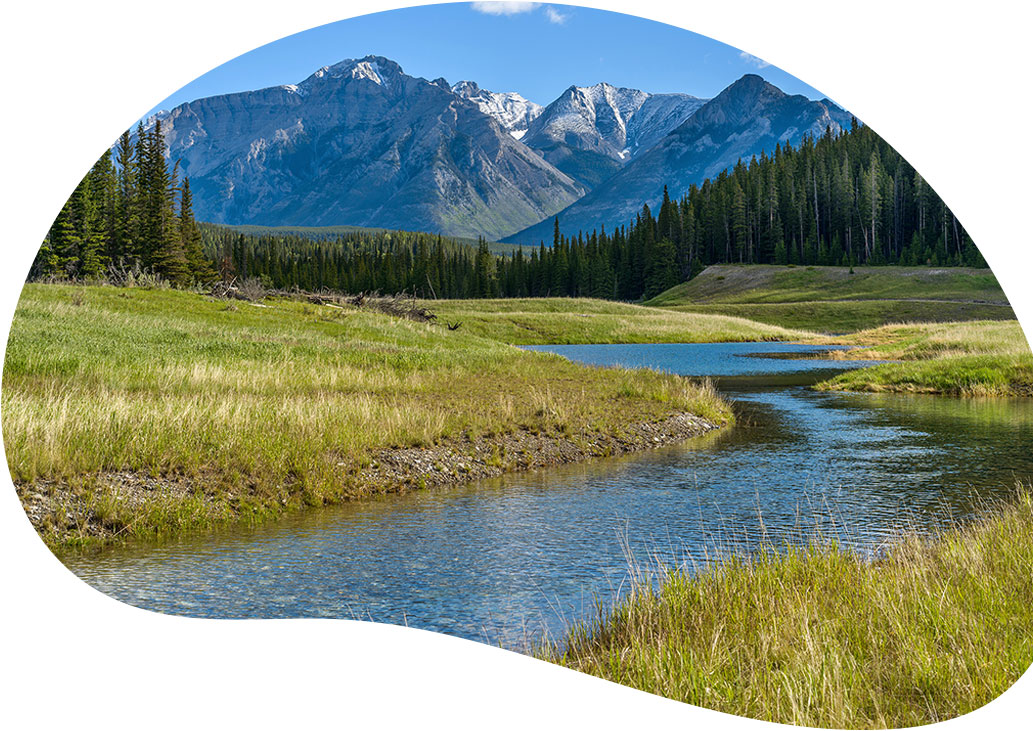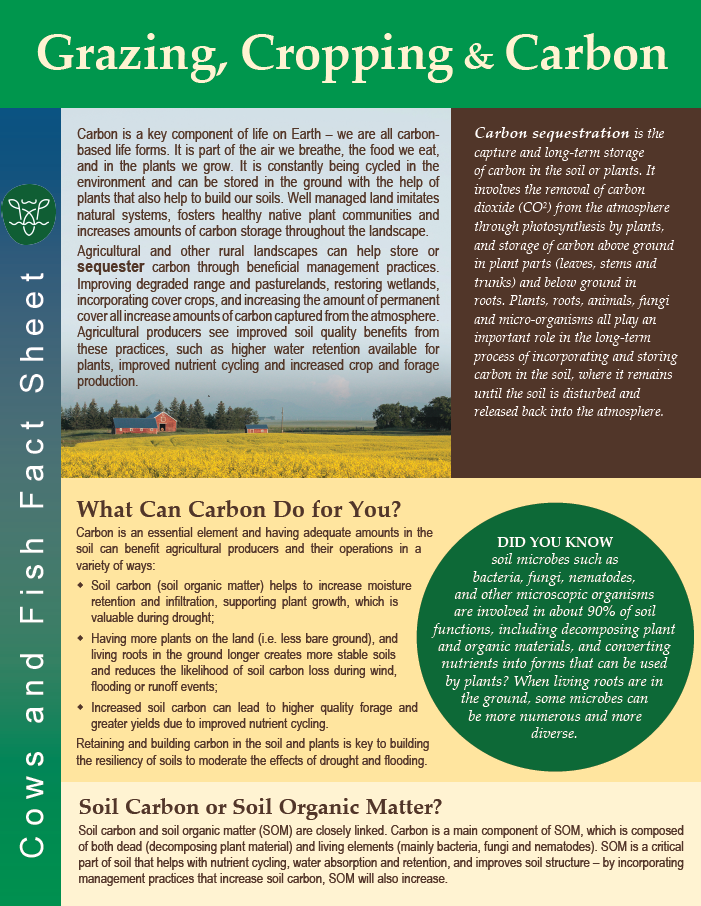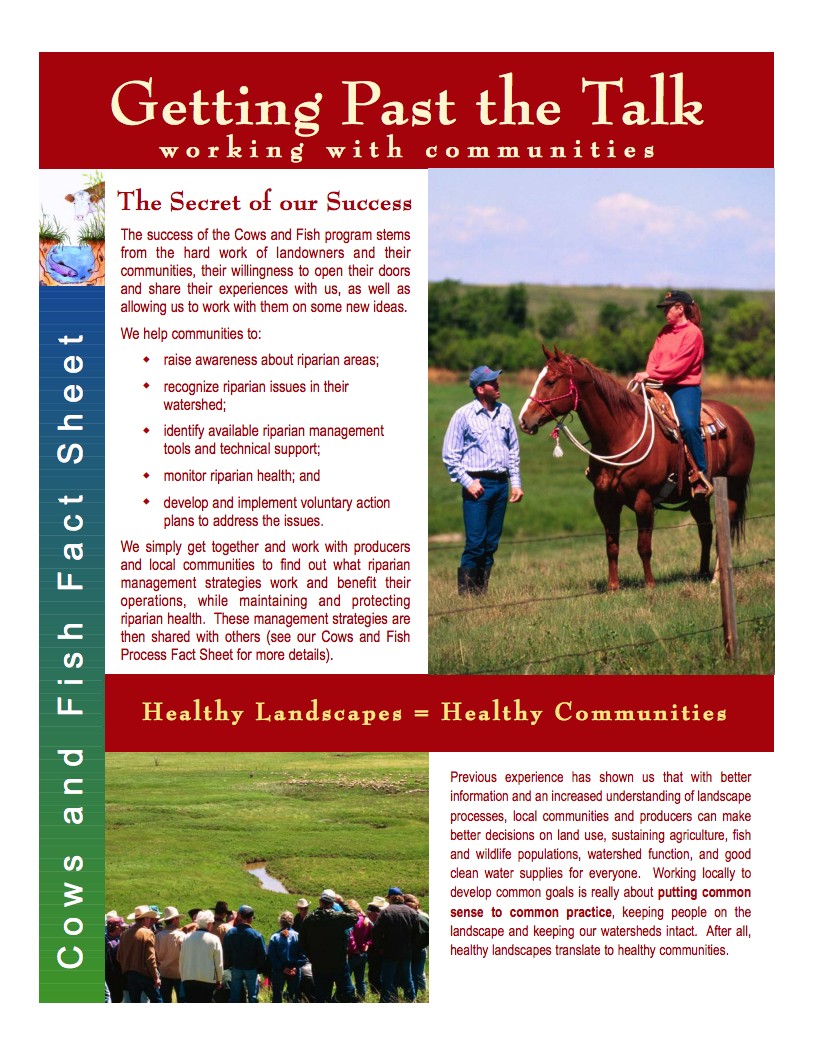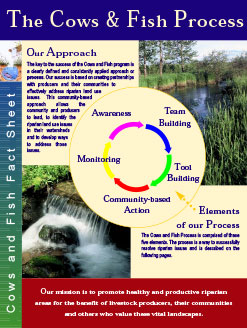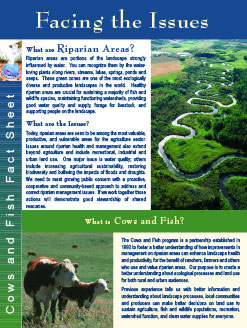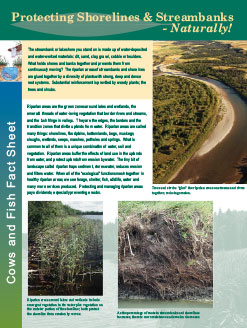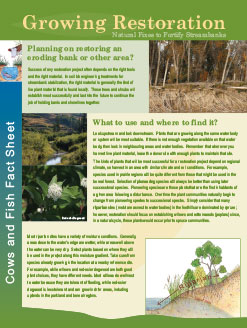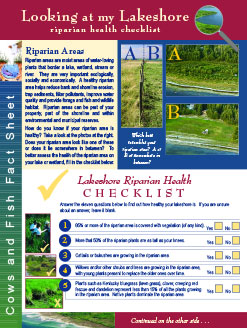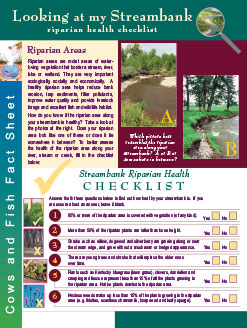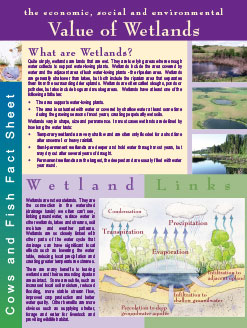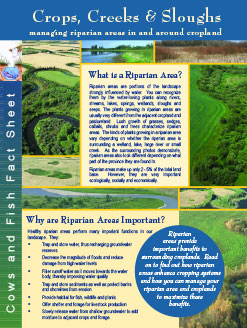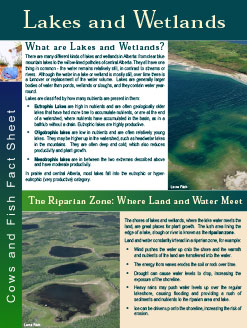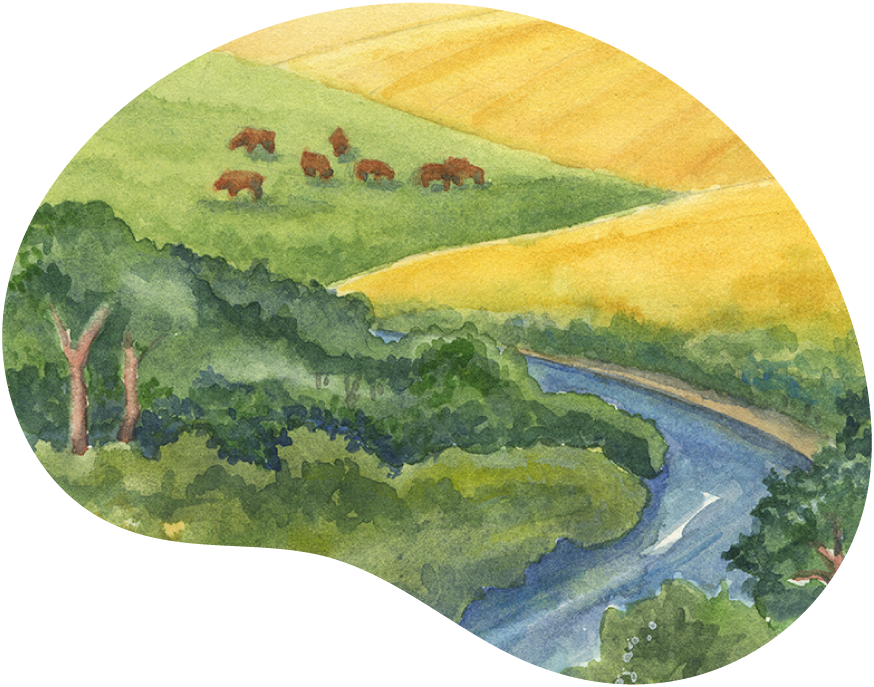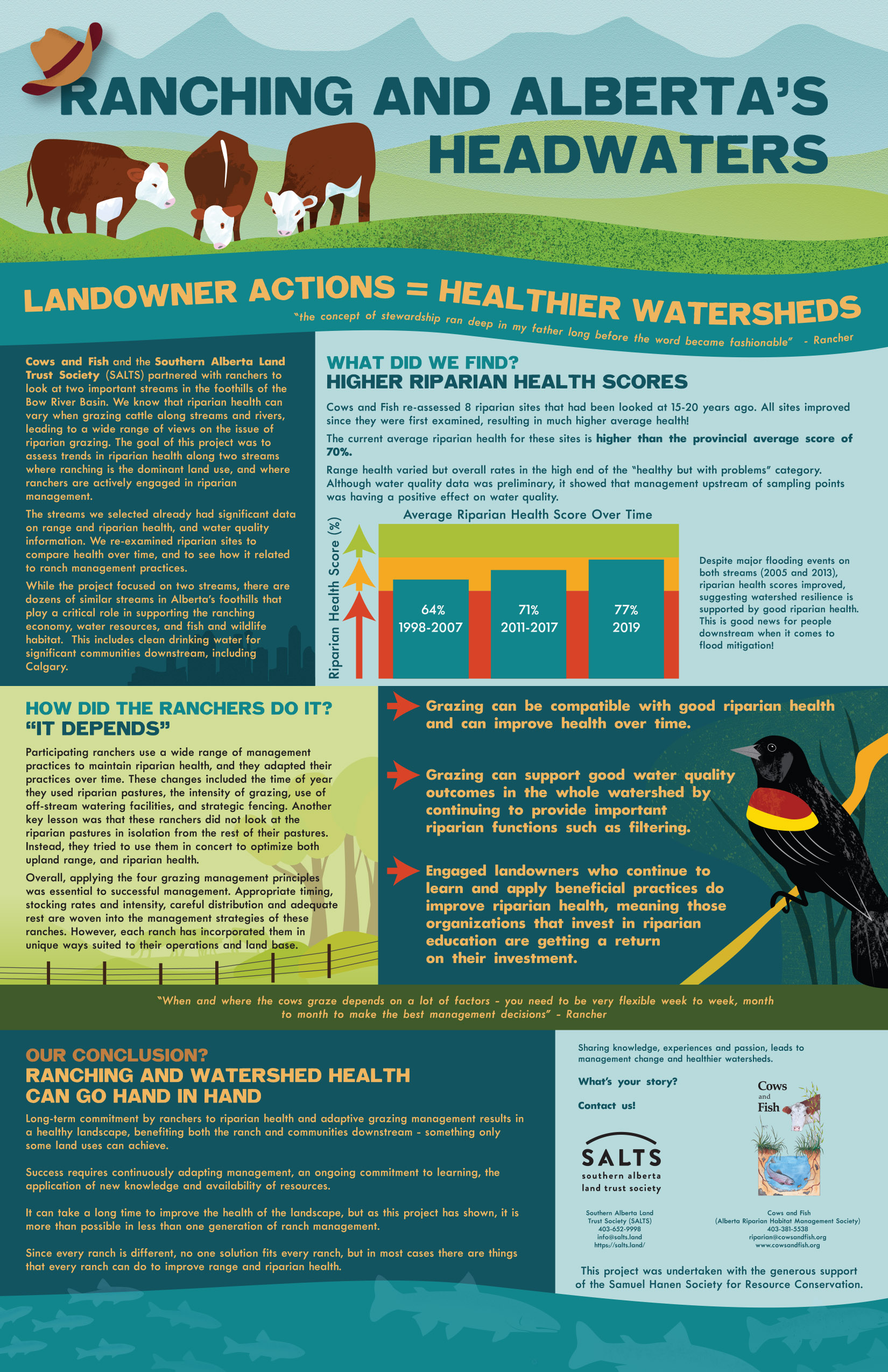
Ranching and Alberta’s Headwaters
Cows and Fish and the Southern Alberta Land Trust Society (SALTS) partnered with ranchers to look at two streams in the foothills of Alberta in the Bow River watershed. The goal of this project was to assess trends in riparian health along two streams where ranching is the dominant land use and where ranchers are actively engaged in riparian management. This factsheet summarizes the project goals and results. Learn how ranching and watershed health can go hand in hand.


